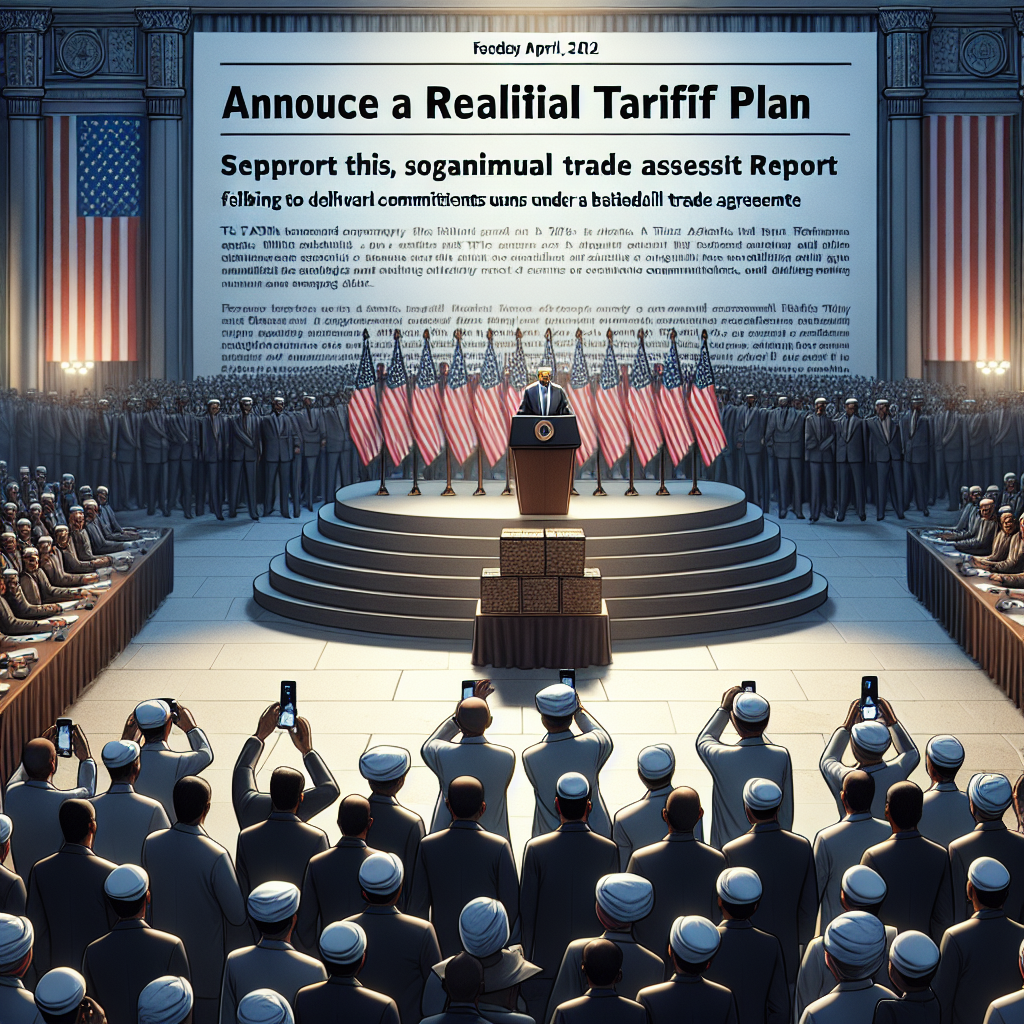Before President Trump is expected to announce his retaliatory tariff plan on April 2, the United States Trade Representative’s Office released its annual trade assessment report, specifically criticizing China for failing to fulfill important commitments under the US-China Phase One trade deal. Experts believe that this is a warning signal sent by the Trump administration to lay the groundwork for tougher trade measures and actions against Beijing in the future.
The USTR submitted the 2025 National Trade Estimate Report to President Trump and Congress on March 31, listing the average tariff rates of nearly 60 trading partners and detailing the foreign trade barriers faced by American exporters, ranging from cumbersome regulations to additional non-tariff barriers.
The report specifically pointed out that China has not fulfilled key commitments made in the US-China Phase One trade deal reached during President Trump’s first term, including improving market access for American agricultural and financial services, refraining from controversial policies related to intellectual property and technology transfer, and increasing purchases of certain American goods and services.
David Huang, an economic scholar based in the United States, stated that the release of this report just before the announcement of the equal tariffs on April 2 carries a clear intention. He said, “This report serves as an important foundation for future tougher measures against Beijing. It is not just a technical document but a strategic-level preparation for confrontation. It sends out three signals: first, paving the way legally and public opinion-wise; second, integrating bipartisan consensus, and third, laying the foundation for international multilateral pressure.”
Professor Xie Tian from the Moore School of Business at the University of South Carolina also remarked that this report’s criticism of China’s failure to fulfill crucial trade commitments serves as a warning to Beijing. He emphasized that the US aims to rectify the trade imbalance, with the largest trade surplus existing between China and the United States. The release of this report by the US is a clear message to China, reminding them of past violations and unfulfilled promises.
Regarding China’s non-compliance with its trade commitments, Huang explained that China is not just an economic entity but a “political-economic alliance” with structural contradictions. The Chinese Communist Party prioritizes maintaining its regime stability above all else, leading to challenges in relinquishing control over strategic industries and technology sovereignty.
The 2025 National Trade Estimate Report by the USTR also specifically mentioned China’s ongoing unfair subsidies to domestic enterprises, as well as restrictions on imports, foreign manufacturers, and foreign service providers entering the Chinese market. The report underscored that “Made in China 2025” is one of the “more far-reaching and harmful industrial plans.”
Huang believes that Beijing understands that its policies may provoke European and American countries and violate international norms. However, the greatest fear lies in the potential destabilization of its ruling regime. Beijing continues to push these policies to prove its “superiority, legitimacy, and discourse authority.”
He elaborated further, stating that despite temporarily downplaying “Made in China 2025” under international pressure, the plan has become integral to China’s political-economic framework. Beijing is moving towards self-reliance by subsidizing its domestic market, replacing international imports with domestically produced alternatives through this excessive subsidy-driven model.
Xie Tian also acknowledged that the Communist Party of China will continue to violate international rules to safeguard its ruling position. He emphasized that regardless of external criticisms, as long as these plans benefit the CCP regime, they will persist. The primary goal is to prevent the economy’s collapse, ensuring the regime’s stability through various measures.
The intricate interplay between China’s political priorities and economic objectives reflects the complexities underlying their trade policies and sheds light on the challenges faced in achieving both domestic stability and international competitiveness.

